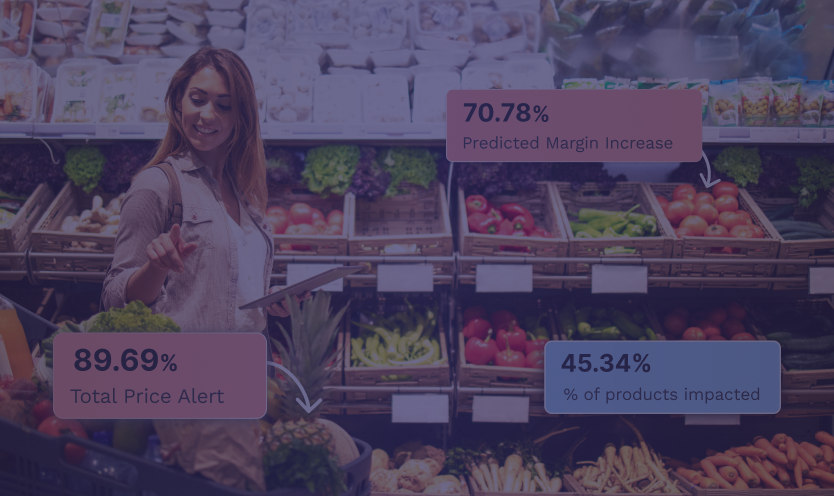The Impact of Tariffs on Key Industries and How Businesses Can Adapt
The Impact of Tariffs on Key Industries and How Businesses Can Adapt
Trade policies and tariffs have long been instruments for governments to regulate international commerce, protect domestic industries, and address trade imbalances. In recent years, tariffs have dominated economic discussions, especially with the latest U.S. trade measures under President Donald Trump. With new tariffs set to take effect on April 2, 2025, termed "Liberation Day”, businesses across various industries are preparing for significant shifts in costs, supply chains, and global competitiveness.
From steel and automotive parts to consumer goods and agriculture, these tariffs are poised to reshape markets, affecting prices, production, and overall business strategies. As companies adjust to this evolving trade landscape, strategic planning and proactive adaptation will be critical to mitigating financial risks and sustaining growth.

Industries Most Affected by the 2025 Tariffs
Automotive Industry
The automotive industry is taking a big hit from the 25% tariff on imported vehicles and parts. With North American supply chains deeply tied to overseas manufacturing, automakers like Ford and General Motors are scrambling to manage higher costs, parts shortages, and the real risk of declining consumer demand. If prices on imported cars spike by $5,000 to $10,000, fewer people will be able to afford new vehicles, which means slower sales and shrinking profits.
Hypersonix’s Pricing AI helps automakers stay ahead by analyzing demand patterns and adjusting prices strategically—helping them avoid overpricing while still protecting margins. In a market where every dollar matters, data-driven pricing could be the difference between thriving and barely surviving.

Manufacturing Sector: Supply Chain Nightmares and Cost Spikes
Manufacturers are caught in the crossfire of rising steel and aluminum tariffs, and it’s creating a ripple effect across industries. With the U.S. imposing a 25% tariff on European steel and aluminum imports, costs for construction equipment, industrial machinery, and automotive manufacturing are surging.
Companies like Caterpillar and John Deere, which rely on these materials for construction equipment and machinery, are seeing costs climb fast. The problem isn’t just the higher price of raw materials—it’s also the supply chain headaches. Delays at ports, sourcing struggles, and last-minute supplier changes are making it tough for businesses to plan ahead.
Hypersonix’s Forecasting AI helps manufacturers predict cost spikes, identify better sourcing options, and adjust production schedules before things spiral out of control. In a time of uncertainty, having an AI-powered crystal ball is invaluable.
Consumer Goods & Retail: Price Wars and Shrinking Margins
Retailers are in a tough spot as electronics, apparel, and household goods from Asia get hit with heavy import duties of 10%. Stores like Best Buy and Walmart are facing a no-win situation, either raise prices and risk losing customers or eat the extra costs and watch profits shrink. And to make things worse, competitors are adjusting their prices in real time, making it hard to stay ahead. Hypersonix’s Competitor AI gives retailers the edge by tracking how rivals are handling price changes, promotions, and sourcing shifts. With this intelligence, retailers can make smart pricing moves—offering discounts where needed and holding firm when they can—to stay competitive without taking a major financial hit.
Agriculture & Food Supply: Trade Wars and Surplus Struggles
For the agriculture industry, the new tariffs aren’t just a challenge, they’re a gut punch. Retaliatory tariffs of upto 15% from major trading partners mean fewer buyers for U.S. crops and meat, leaving companies like Tyson Foods and Cargill with too much supply and not enough demand. Farmers are left with tough choices: sell at a loss, cut production, or hope for better trade deals. Hypersonix’s Promo AI helps food producers get creative with promotions—targeting the right markets, offering strategic discounts, and creating bundles that drive domestic demand. Instead of just taking the hit, businesses can use AI to find ways to keep revenue flowing, even when global trade is working against them.
Across every industry, companies are facing an uphill battle against rising costs, supply chain disruptions, and unpredictable market shifts. Hypersonix’s AI-driven solutions give businesses the tools they need to make smarter, faster decisions, turning data into strategy and uncertainty into opportunity.

How Businesses Can Mitigate the Impact of Tariffs
Rethink Pricing and Cost Management
Companies should adjust pricing dynamically to offset tariff-related cost increases. Automating cost pass-through strategies can help avoid over-pricing or under-pricing, ensuring competitiveness while maintaining margins.
Monitor Competitor Reactions
Setting up alerts to track competitor responses to tariff changes enables businesses to stay ahead by adjusting pricing strategies accordingly. This proactive approach helps maintain market position without losing margin. See how Hypersonix Competitor AI helps you streamline tariff response based on competitor pricing.
Diversify Supply Chains
Exploring alternative suppliers or local sourcing options can help businesses mitigate tariff-driven cost increases. Diversifying supply chains reduces dependency on affected regions and enhances resilience.
Leverage Trade Agreements and Duty Drawbacks
Businesses should take advantage of trade agreements and duty refund programs to offset tariff-related costs. Engaging with trade associations and legal experts can help navigate these opportunities effectively.

How Hypersonix AI Helps Businesses Navigate Tariff Uncertainty
Forward-thinking companies are using Hypersonix AI’s Tariff Rules to take control of their pricing strategy.
- Instantly assess the impact of new tariffs across your product assortment.
- Track competitor responses to tariff-driven pricing changes.
- Automate cost pass-through while maintaining a competitive market position.
- Stay profitable—even in volatile conditions.
As tariffs take effect, businesses that embrace AI-powered pricing intelligence will have a clear competitive advantage.
Stay informed and ahead of the game - book a slot at our upcoming webinar for in depth explanation of how to overcome Tariff Uncertainty
.png?width=730&height=68&name=CS_Learn%20More%20(2).png)






